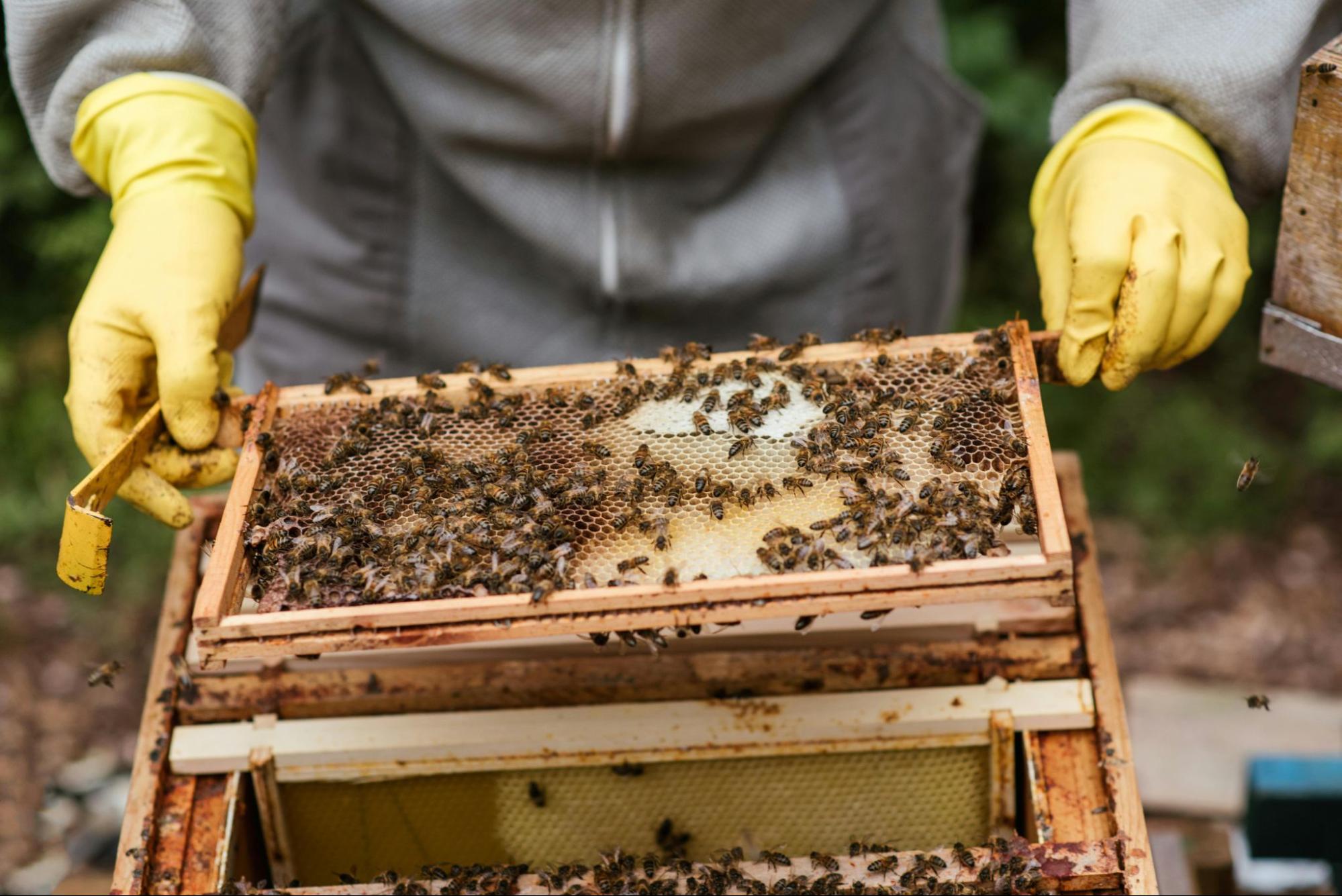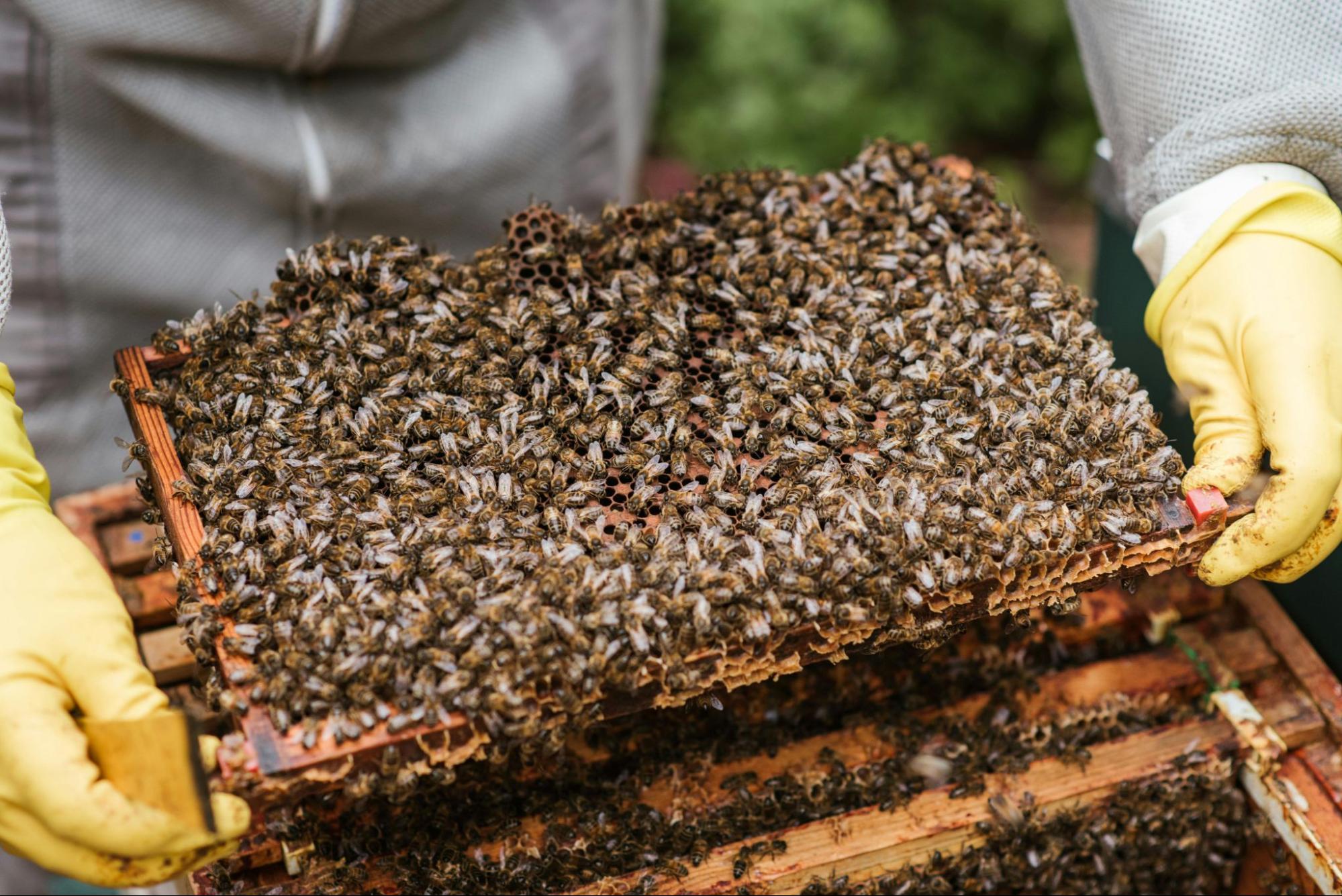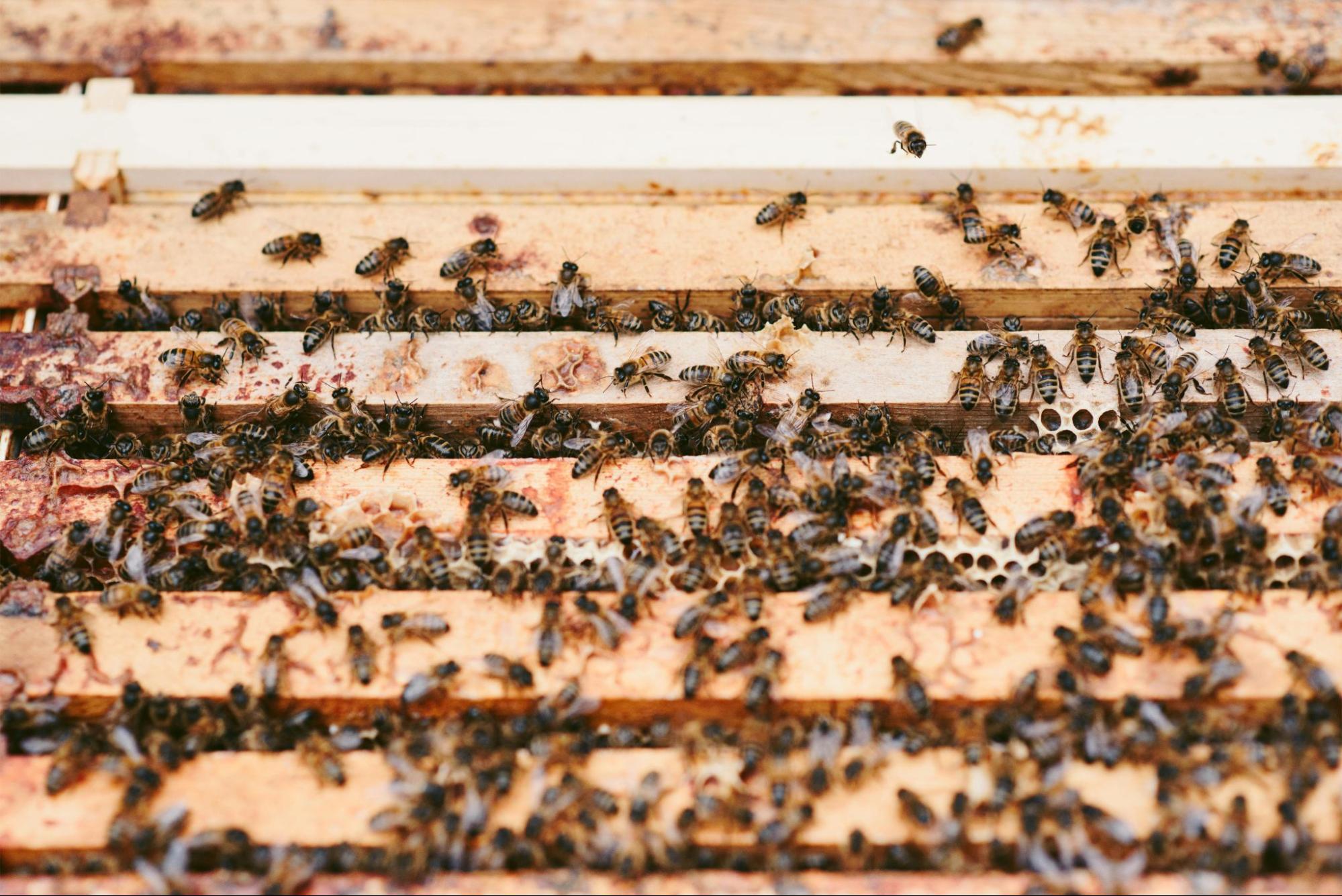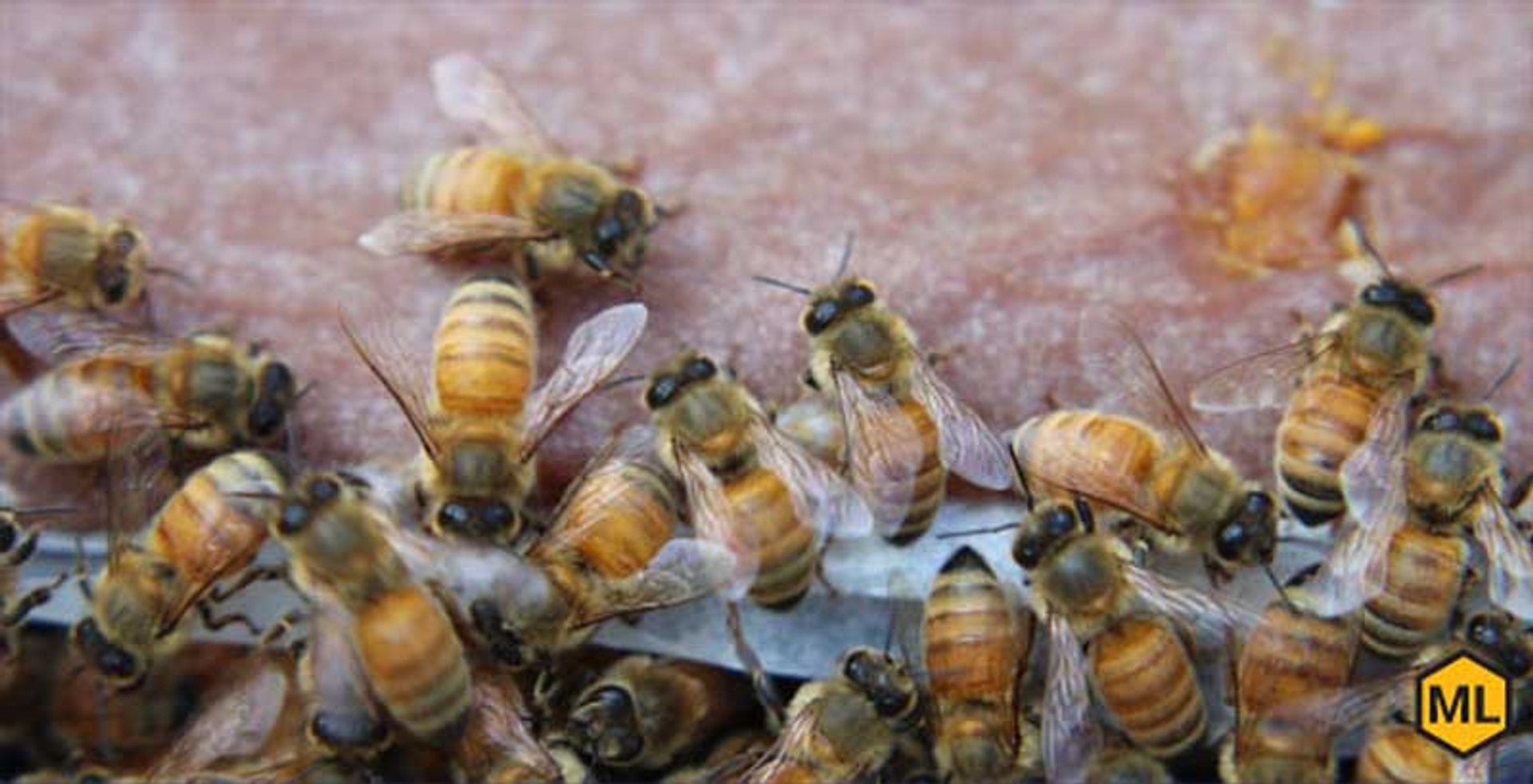Why Feed Pollen Substitutes?
It’s a fair question. Is pollen substitute actually necessary? Why should you feed pollen substitutes at all? Don’t bees gather pollen themselves?
Honey or syrup are the carbs in a bee’s diet, and pollen or pollen substitute is their protein. They must have sufficient quantities of each to raise brood and survive as a hive. We can also use food to manipulate hives to grow faster and stay healthier during certain times of the year.
This is especially true with pollen substitutes. I recommend primarily using purchased, pre-made pollen patties rather than making homemade ones.
Why Feed Pollen Substitutes?
If you have a strong, year-round, multi-source pollen flow, you don’t need a pollen substitute. Chances are (unless you live in the tropics) this is not the case for you. There are major summer droughts, freezes, winter, etc., that prevent the quantity and quality of natural pollen needed.
So, we feed pollen sub to accomplish the following three primary goals:
1. Preparing for Winter: Early Feeding
To prepare our bees for winter, feeding pollen substitutes two to three months before the first freeze is crucial. This ensures bees have all the nutrients they need to rear brood effectively.
Late summer and early fall see the rearing of "winter bees," which live longer than summer bees and require a complete diet to build fat stores and robust immune systems.
A poor pollen flow or nutritionally insufficient pollen won't support the development of healthy winter bees (think eating nothing but pizza). Supplementing with pollen substitutes and syrup provides the essential protein and nutrition for raising strong winter bees.
| Feeding Strategy: Place pollen substitutes close to the brood box for easy access, ensuring nurse bees can efficiently feed the developing brood. |
2. Boosting Brood Rearing
Feeding pollen substitutes about a month after the first freeze and two weeks before the spring's first pollen-producing plants bloom can extend brood rearing beyond its usual period. This helps increase the hive’s population, which, no matter the season, is a good thing!
3. Addressing Nutritional Deficits
Nutritional deficits can occur during dry summers or late spring freezes when pollen-producing plants are scarce. Without adequate pollen and variety, hives risk starvation, leading bees to cannibalize brood and severely impact the hive's health and population.
Feeding pollen substitutes and syrup during these times is critical for hive survival, ensuring bees have the necessary nutrients to thrive despite external challenges.

Where to Place Pollen Patties
Pollen patty placement is, thankfully, pretty simple! You’ll notice the purchased patty has wax paper on both sides. That wax paper serves the important role of keeping the patty moist as the bees eat it. They will chew it up and throw it out the front door of the hive.
The patty should be placed between your two brood boxes or between the two boxes that are mostly full of bees. You want it in the heart of the hive. Smoke the bees off the top bars, lay the patty down at the very center, and set the box on top of it. It’s thin enough to fit in between the two boxes.
A strong hive should eat a 1 lb patty within one week to 10 days. In regions where small hive beetles are a problem, cut the 1 lb patty into smaller portions, reducing the amount of patty available for SHB to use as a breeding ground. You’ll need to replenish more often, but it’s well worth it to avoid a hive beetle takeover.
| Beetle Battle Strategy: In beetle-prone areas, divide your pollen patties into smaller sections to limit beetle breeding grounds without compromising on bee nutrition. |
How to Properly Introduce Pollen Patties to Your Hive

Introducing pollen patties to your hive is a strategic step in ensuring your honey bee colonies receive optimal bee nutrition, especially during times when natural pollen sources are scarce.
Pollen patties, a form of pollen substitute, are designed to mimic the nutritional value of natural pollen, providing essential proteins and nutrients that support the health and productivity of honey bees.
Here’s a guide on how to properly do it:
Step 1: Assessing the Need for Pollen Patties
Before feeding bees with pollen supplements, assess your honey bee colonies' needs. Observe the natural pollen flow and only introduce pollen patties when you notice a gap in bee nutrition, such as during early spring, late fall, or periods of drought. Adult bees and developing broods require consistent protein sources, which pollen patties can supplement.
Step 2: Preparing the Hive
Ensure that your hive is ready for the introduction of pollen patties. This means checking that the hive is healthy, free from pests and that the honey bees have sufficient sugar syrup or honey stores. Sugar syrup can serve as an additional feeding support, providing the carbohydrates needed alongside the protein-rich pollen substitute.
Step 3: Placing the Pollen Patty
To introduce a pollen patty, carefully open the hive and place the patty directly on the top bars of the brood chamber where the cluster of bees is most concentrated. Adult bees will have easy access to the pollen patty, allowing them to feed on it and carry its nutrients back to the brood. If using multiple patties, ensure they are spread out to prevent overcrowding in one area.
Step 4: Monitoring Consumption
After placing the pollen patty, monitor its consumption over the next few days. A healthy, active honey bee colony may consume a pollen patty within a week to ten days. Observing how quickly the bees go through the pollen substitute can help you gauge the colony's protein needs and adjust your feeding schedule accordingly.
Step 5: Adjusting the Feeding Schedule
Based on the consumption rate of the pollen patties, adjust your feeding schedule to ensure continuous support for bee nutrition. During peak brood-rearing seasons, honey bee colonies may require more frequent pollen patty replacements. Additionally, supplementing with sugar syrup ensures that honey bees have access to both the necessary proteins and carbohydrates.
| Share Insights: Document your pollen patty feeding schedule and hive observations. Share your experiences with fellow beekeepers to contribute to collective knowledge. |
Frequently Asked Questions
Discover how pollen patties influence brood production and overall hive health. These FAQs dive into the strategic use of pollen supplements to support strong, thriving bee colonies.
What's the best time to start spring feeding with pollen patties?
Spring feeding with pollen patties ideally begins as early winter transitions to late winter, prepping colonies for the upcoming nectar flow.
How do pollen patties stimulate brood production in the brood nest?
Pollen patties provide essential proteins that stimulate brood production, encouraging the queen to increase egg laying as food stores improve.
Can pollen patties replace the need for bee bread in the brood box?
While pollen patties supplement bee bread, they can't entirely replace it. Nurse bees use both to feed larvae and ensure healthy brood development.
What role do nurse bees play in utilizing pollen patties for raising brood?
Nurse bees consume pollen patties to produce royal jelly, a vital brood food for larvae, supporting robust brood development.
How do many beekeepers use winter patties differently from regular pollen patties?
Many beekeepers use winter patties with higher sugar content to provide energy during cold months, switching to protein-rich pollen patties in late winter to stimulate brood production.
What are some alternative feeding strategies for light hives in early winter?
For light hives lacking sufficient food stores in early winter, beekeepers may use granulated sugar or candy boards to provide emergency sustenance until spring feeding.
How does adding pollen patties affect a colony's preparation for the nectar flow?
Introducing pollen patties before the spring nectar flow helps colonies build up their numbers, ensuring more foragers are available to collect nectar.
Can pollen patties be used to support egg-laying and brood food supply?
Yes, pollen patties support the queen's egg laying by ensuring nurse bees have the protein needed to produce enough brood food, like royal jelly, for developing larvae.
Are there specific benefits to using dry pollen supplements over pollen patties?
Dry pollen supplements can provide a direct source of protein but may be less attractive to bees than pollen patties, which are formulated to closely mimic natural pollen.
How should beekeepers manage brood box feeding to avoid disrupting the brood nest's natural development?
Beekeepers should place pollen patties close to the brood nest but not disrupt the bees' natural brood-rearing processes, allowing easy access for nurse bees without overcrowding the brood area.

Conclusion
Now, let’s take a step back. Just how critical is all this feeding? To be honest, some years, it doesn’t make much of a difference. And other years, it makes all the difference between a 10% and 80% loss rate.
The harsher the weather and the more severe the pollen shortages, the more critical the feeding. If you live in an area that has a consistent pollen flow all spring, summer, and fall, you may not need to do much feeding.
However, for most areas, it can be a huge help. We recommend beekeepers try things for themselves and see what works. Try feeding pollen sub to half of your hives only, and see which do better over the summer and winter.

